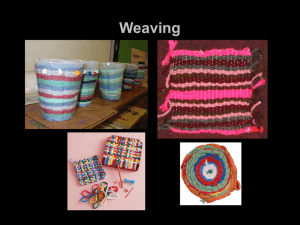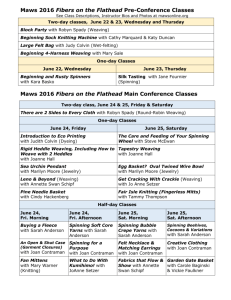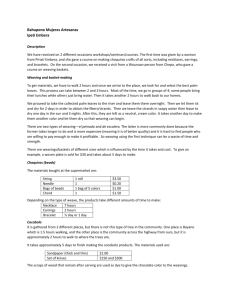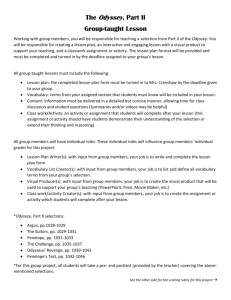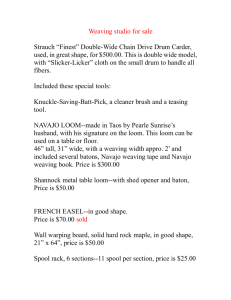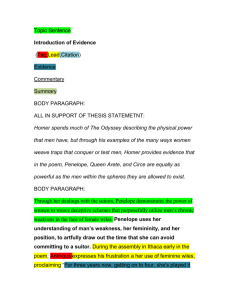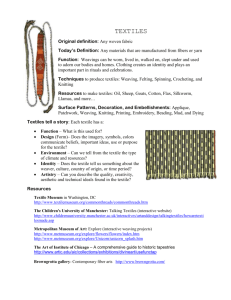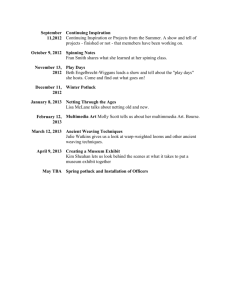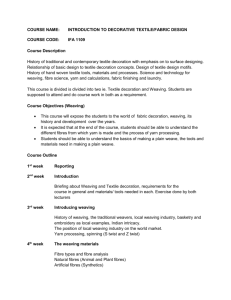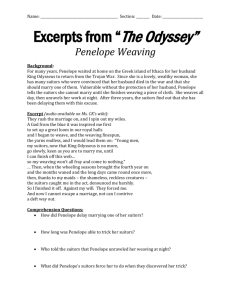Winding up Doloi: Literal and Metaphorical Textile Language in
advertisement
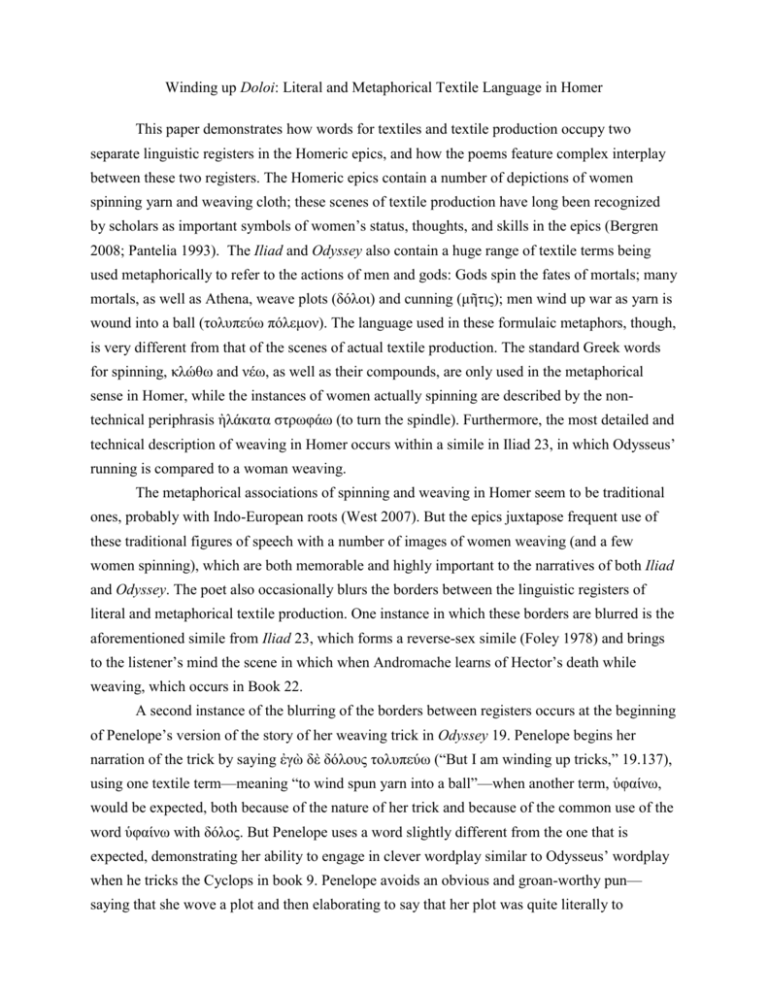
Winding up Doloi: Literal and Metaphorical Textile Language in Homer This paper demonstrates how words for textiles and textile production occupy two separate linguistic registers in the Homeric epics, and how the poems feature complex interplay between these two registers. The Homeric epics contain a number of depictions of women spinning yarn and weaving cloth; these scenes of textile production have long been recognized by scholars as important symbols of women’s status, thoughts, and skills in the epics (Bergren 2008; Pantelia 1993). The Iliad and Odyssey also contain a huge range of textile terms being used metaphorically to refer to the actions of men and gods: Gods spin the fates of mortals; many mortals, as well as Athena, weave plots (δόλοι) and cunning (μῆτις); men wind up war as yarn is wound into a ball (τολυπεύω πόλεμον). The language used in these formulaic metaphors, though, is very different from that of the scenes of actual textile production. The standard Greek words for spinning, κλώθω and νέω, as well as their compounds, are only used in the metaphorical sense in Homer, while the instances of women actually spinning are described by the nontechnical periphrasis ἠλάκατα στρωφάω (to turn the spindle). Furthermore, the most detailed and technical description of weaving in Homer occurs within a simile in Iliad 23, in which Odysseus’ running is compared to a woman weaving. The metaphorical associations of spinning and weaving in Homer seem to be traditional ones, probably with Indo-European roots (West 2007). But the epics juxtapose frequent use of these traditional figures of speech with a number of images of women weaving (and a few women spinning), which are both memorable and highly important to the narratives of both Iliad and Odyssey. The poet also occasionally blurs the borders between the linguistic registers of literal and metaphorical textile production. One instance in which these borders are blurred is the aforementioned simile from Iliad 23, which forms a reverse-sex simile (Foley 1978) and brings to the listener’s mind the scene in which when Andromache learns of Hector’s death while weaving, which occurs in Book 22. A second instance of the blurring of the borders between registers occurs at the beginning of Penelope’s version of the story of her weaving trick in Odyssey 19. Penelope begins her narration of the trick by saying ἐγὼ δὲ δόλους τολυπεύω (“But I am winding up tricks,” 19.137), using one textile term—meaning “to wind spun yarn into a ball”—when another term, ὑφαίνω, would be expected, both because of the nature of her trick and because of the common use of the word ὑφαίνω with δόλος. But Penelope uses a word slightly different from the one that is expected, demonstrating her ability to engage in clever wordplay similar to Odysseus’ wordplay when he tricks the Cyclops in book 9. Penelope avoids an obvious and groan-worthy pun— saying that she wove a plot and then elaborating to say that her plot was quite literally to weave—in favor of a far more subtle play on words: She wound up the plot as yarn into a ball (a necessary step between spinning and weaving), and then she executed it by weaving and unweaving the shroud. In this play on words, the poet shows Penelope’s capacity for Odyssean metis, as well as showing the poem’s audience the importance and interconnectedness of the two linguistic and semiotic registers of textile-related language. Bibliography Barber, E.J.W. Prehistoric Textiles: The Development of Cloth in the Neolithic and Bronze Ages. Princeton, N.J.: Princeton University Press, 1991. Bergren, Ann. Weaving Truth: Essays on Language and the Female in Greek Thought. Washington, D.C.: Center for Hellenic Studies, 2008. Foley, Helene. “Reverse Similes and Sex Roles in the Odyssey.” Arethusa 11.1 (1978), pp. 7-26. Moulton, Carroll. “Homeric Metaphor.” Classcal Philology 74.4 (1979), pp. 279-293. Murnaghan, Sheila. “Penelope’s Agnoia: Knowledge, Power, and Gender in the Odyssey.” In Oxford Readings in Classical Studies: Homer’s Odyssey, edited by Lillian Doherty. Oxford: Oxford University Press, 2009, pp. 231-246. Pantelia, Maria C. “Spinning and Weaving: Ideas of Domestic Order in Homer”. The American Journal of Philology 114.4 (1993). 493-501. Snyder, Jane McIntosh. “Web of Song: Weaving Imagery in Homer and the Lyric Poets”. The Classical Journal 76.3 (1981), pp. 193-196. West, M.L. Indo-European Poetry and Myth. Oxford: Oxford University Press, 2007.
